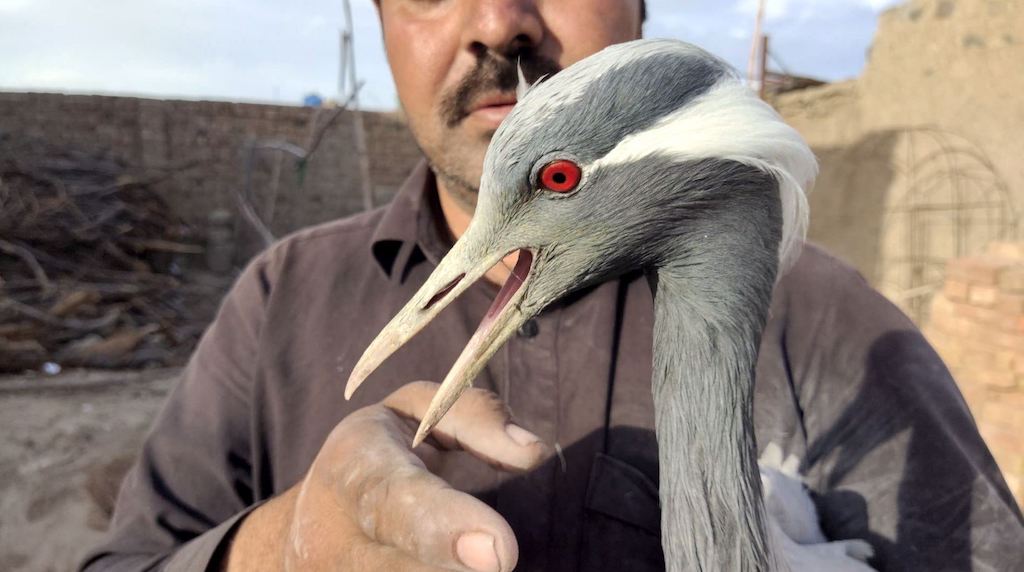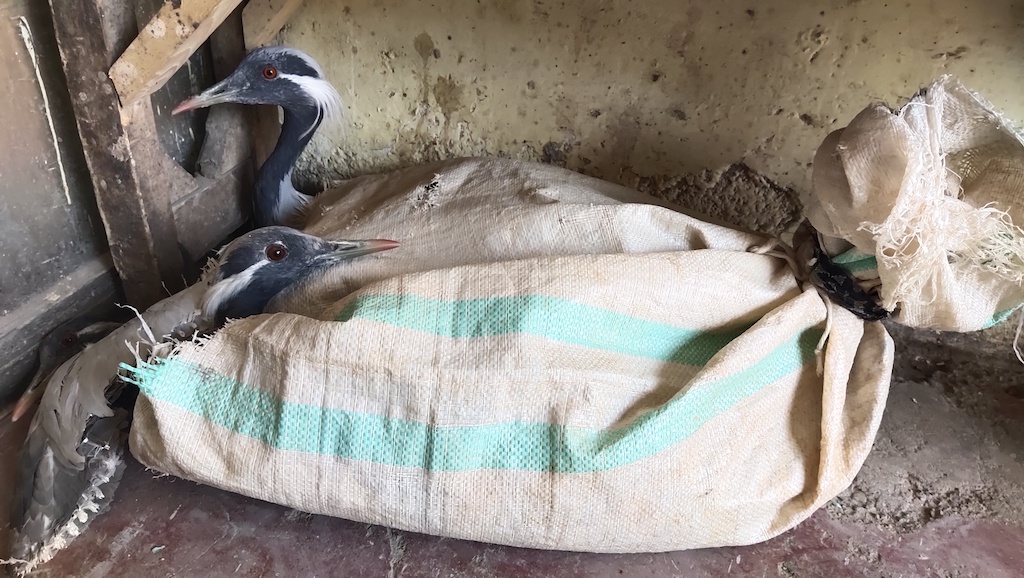Migratory birds have been a symbol of nature's resilience, traveling thousands of miles from cold northern regions to warmer climates, such as Pakistan, each year. This annual migration is an awe-inspiring spectacle, as millions of birds like the Houbara Bustard, ducks, and quails arrive in Pakistan from Siberia and other icy territories to escape the brutal cold and seek food in milder temperatures. However, their migration has become increasingly perilous in the face of climate change, illegal hunting, and habitat destruction.
Pakistan is considered a large wetland area, deserts, and forests where migratory birds have always found a stopping place. The once-safe sanctuary is under threat today. 
Climate change speeds up. As it advances, changes in the pattern of weather and elimination of essential habitats put this species into danger, imperiling their survival and causing disturbances to the fragile ecology balance in Pakistan. For instance, World Migratory Bird Day saw experts requesting emergency steps to reduce impacts brought by climate change, as well as illegal hunting on migrants. The vulnerability is now getting worse.
The perils of migration
An estimated million migratory birds take off from the cold sceneries of Siberia, the Himalayas, and others every year to the relatively warmer plains of Pakistan. Long journeys to cover thousands of kilometers of distances are taken in search of food and shelter as they find temporary homes in wetlands, grasslands, and forests.
But climate change has actually altered the very conditions that make these habitats ideal. Birds are sensitive to changes in temperature, rainfall, and vegetation. The natural timing of their migration has also been disrupted by unpredictable weather patterns and shifting ecosystems. Birds that used to arrive at specific times in Pakistan now find their traditional habitats altered or degraded. In some regions, they find fewer food resources, forcing them to travel further and expend more energy.
Climate change has exacerbated the threats to migratory birds, with temperature fluctuations, extreme weather events, and habitat loss making it harder for these species to thrive. According to the Intergovernmental Panel on Climate Change (IPCC), average global temperatures are expected to rise by 1.5°C to 4°C by the end of this century, significantly altering ecosystems and habitats. Pakistan is one of the most vulnerable countries to climate change, with its temperature rising at a rate of about 0.6°C per decade, almost double the global average.
One of the significant impacts of climate change on migratory birds in Pakistan is the loss of wetlands. Wetlands are important resting and feeding grounds for many migratory birds on their long journeys. However, these ecosystems are highly vulnerable to the changing climate.
According to the Food and Agriculture Organization, more than 50% of the world's wetlands have been lost in the last century. The rate of loss has accelerated with both climate change and human activities such as industrial pollution and urbanization.
The rise in temperature also impacts the food source for migratory birds. According to a research by WWF, over 60% of migratory birds rely on insects, seeds, and aquatic plants for survival. Climate-induced temperature changes have resulted in advanced springs, which have caused a mismatch between bird migration and the availability of food sources. This mismatch impacts the energy reserves that birds require to complete their journey.
Moreover, the rising frequency of extreme weather phenomena such as floods, droughts, and long-term winters has further complicated migration patterns. In 2022, Pakistan faced its worst floods ever, where over 33 million people have been affected and vast portions of land are submerged. The devastating effects of floods for humans also flood crucial habitats of birds, leaving very few places for migratory birds to rest and breed.
Role of Illegal hunting
Illegal hunting is the second biggest impact on migratory bird species. Poaching has had devastating effects on birds as a result of human's demand for bird meat and trophies. The Houbara Bustard and the common quail are examples of massive killings that have occurred because of poaching. The current pressure from climate change adds to the already burdened birds.
Although the government has attempted to deal with this problem by increasing fines and penalties against illegal hunting, enforcement still poses a challenge. Hunting is still rampant in certain areas, and poachers are targeting birds during migration seasons when they are most vulnerable. This is worsened by the lack of adequate resources and manpower to monitor and protect bird populations in remote regions.
The effects of illegal hunting are severe. It not only reduces the population of key bird species but also disrupts ecosystems. Birds are important for pollination, pest control, and seed dispersal, all of which help maintain healthy ecosystems. The loss of migratory birds due to illegal hunting can have ripple effects on entire ecosystems, leading to the collapse of local biodiversity.
How many birds are at risk?
Extinction of migratory birds is increasingly a real risk. The United Nations published a report indicating that worldwide, one in eight species of birds is now at the risk of extinction, where most of them are exacerbated by the impact of global warming and hunting pressures. Also, the International Union for Conservation of Nature (IUCN) warned of an estimate that about 600 to 900 species of birds will probably be extinct at the end of the century if current climatic trends continue.
Pakistan faces similar darkness: The population of common birds, such as sparrows, is dwindling day by day. According to a report by the WWF, sparrow population declined sharply in urban areas in Pakistan. It is largely due to habitat loss and global warming.
Another cause of worry is the decline of such extremely vulnerable species as the Houbara Bustard. Its population has declined considerably due to poaching, though it is often hunted by those poachers in Pakistan.
A study by the Wildlife Conservation Society revealed that the total population of Houbara Bustards worldwide has decreased to 50% over the last few decades. Primarily, this decline is due to hunting and habitat loss.
Migratory birds and ecosystem
Birds are not just beautiful creatures to admire; they play a crucial role in maintaining the health of ecosystems. Migratory birds contribute to pest control, seed dispersal, and pollination, all of which are essential for the survival of plants and animals. As birds migrate from one region to another, they help spread plant seeds, ensuring the growth of new vegetation in areas that might otherwise be barren.
Birds are also indicators of the health of the environment. Declines in migratory bird populations indicate deeper environmental issues, such as habitat destruction, pollution, and climate change. Protecting these birds means protecting the ecosystems they support, which in turn benefits human health and the economy.
What can be done?
While the situation for migratory birds in Pakistan is rather grave, it is still not too late to turn things around. Both climatic change and illegal hunting must be addressed immediately.
The first area is habitat protection and restoration. The habitats of migratory birds must be protected and restored, including investment in wetland, forest, and other critical habitat conservation. Restoration projects in wetlands, for example, like the ones undertaken in the Indus River Basin, are in the right direction.
Second, the government should intensify efforts on illegal hunting. This could be done by strengthening the law enforcement, increasing the penalties for poaching, and creating awareness among local communities about the importance of protection of migratory birds.
Therefore, root causes of climate change need to be addressed. Pakistan should take bold steps to cut down its carbon emissions to reduce the impacts of climate change. This includes renewable energy investment, sustainable agricultural practice promotion, and climate-resilient strategies for conservation.
Climate change, poaching, and habitat destruction are highly threatening the lives of migratory birds in Pakistan. With their combined effects, a large number of species are facing extinction, which will eventually disrupt many ecosystems and biodiversity. However, with prompt action towards protecting habitats, combating illegal hunting, and climate change, Pakistan can render a future for these wonderful creatures.



























